Colonial Linen: A Step Towards American Independence.
In 1794, Eli Whitney invented the cotton gin. Perhaps no other historical fact has been so ingrained into my mind as this. Year after year, I would learn about the infamous cotton gin and it’s epic impact on America as we know it.
The all-mighty cotton gin makes it seems that life, or proper living, did not even exist in the new American colonies before it walked onto the scene. That just can not be!
I think you know where I’m going with this. What trusty fabric was there when cotton was busy being a diva and requiring special equipment for production? That’s right- LINEN.
Linen saved the day for American colonists who were trying to claim their new-found independence. Life is fairly easy for us now with all of our needs conveniently located in supermarkets, shopping malls, and online. Our old American roots can easily be forgotten in this mess of consumerism, but let’s try to imagine this strange past for a moment.
The English settlement of Jamestown, Virginia in 1607 marks the beginning of the Colonial American period, which spans until 1775 with the beginning of the Revolutionary War in 1775. Great Britain set up a trade system which made it easy for them to obtain raw materials from the new colonies, while providing colonists with their own manufactured goods.
Early settlers in Colonial America soon realized that their dreams of independence were still being squashed by Great Britain. The trade system had been arranged to fully benefit Great Britain and guarantee that the colonies rely on British goods.
Colonists fell into this trap partially because they still considered English goods to be the highest qualities. They favored materials from the mother country rather than their utilizing their own resources.
What was going on here? They made a really long and dangerous journey across the ocean with hopes of freedom and happiness! So where was all the prosperity hiding? The issue of escaping religious persecution had been mostly alleviated, but not the whole “better life” part.
Thankfully, after some time, the colonists finally got some sense knocked into them. Although they still considered themselves to be subjects of Great Britain, the colonists began standing up for themselves with small patriotic steps. This spirit of independence led the colonists to begin spinning and weaving their own cloth. The production of fabrics, most notably linen and wool, became a practical and patriotic practice.
It comes as no surprise that the British did their best to discourage colonial cloth manufacture. To ensure the continuation of trade with the colonies, higher tariffs were placed on looms and spinning wheels. They also passed acts forbidding the export and sale of cloth woven in the colonies. These acts, along with others passed, only increased the the colonists’ sense of independence.
Later, this patriotism would develop into a strong revolutionary sentiment. Before it grew to that point, however, cloth production in colonial America was one of the significant ways ties were beginning to be severed with Great Britain. Many families began to grow flax for linen and raise sheep for wool. Woodworkers began producing the necessary textile equipment, such as spinning wheels and looms.
Small steps were finally being made towards independence. We all know how that tale ends; a glorious war resulting in a free country full of promise! Hoorah!
Okay, there was a little more to it….but let’s just focus on the linen again. As I reminded us, life was hard back then! Farming was not an easy task, especially when it was your livelihood. The growing and harvesting of linen demonstrates the demanding life of farming.
Growing & Harvesting Flax:
(Just a note- these photos are not from the Colonial period. They just nicely demonstrate the process of harvesting flax.)
Flax was easily grown as an annual crop even in the difficult and short New England growing season. Linen quickly became the fabric of choice in colonial America.The flax plant contains a fibrous center in the stalk of the plant. A series of procedures separates the fiber from the rest of the plant, enabling it to be spun into thread, and then woven into a linen fabric.
Why not cotton? Well, while cotton was grown in North America during this period, it was incredibly tedious and time-consuming to produce. Before the invention of the cotton gin, it just did not make sense to devote so much energy into the manufacturing of cotton.
Linen could be produced and spun in much larger quantities than labor-intensive cotton, and in a fraction of the time. Linen is also an wonderfully strong and durable fabric. It’s long wearing ability made it the perfect fabric during a period when resources where not as readily available as they are now days.
Flax seeds tended to be sown in April or May and were carefully weeded until the plants reached about five inches high. Children helped with weeding because their small, bare feet would not damage the delicate crop.
Around June, blue flowers would blossom from the tops of the plants. These beautifully flax fields would be 18 to 36 inches high by August.
These bundles were arranged in stooks (groupings shaped like small huts) to dry in the field.The dried stalks were spread out and turned several times.
They were then rippled, or combed, with a heavy wire comb to release the seed pods. The seeds were kept for next year’s crop.
After the seeds were removed, the stalks were wet down in order to soften the stalks and rot the leaves. This is retting, and it helps to separate the fibers from the central woody core of the plant. The moisture is what breaks down the connective gums in the plant.
Following this, the stalks were cleaned, dried and tied into bundles.
The braking stage uses a flax-brake to break the stalks and separate the fibers. This task required some muscle!
After this strenuous process, they stalks were scutched or swingled. This step removed the bark and also took a great amount of strength. These process was done twice and then the fibers were pounded to be softer.
The flax would then be hackled, or drawn through hackles (combs) to remove any chaff that is left and detangle the fiber until it resembles golden hair.
Tow are the short, knotted pieces that are left in the hackles. These lesser quality fibers were often used from utiliarian textires such as feed sacks (tow sacks) or dishtowels.
The other fibers continued to be pulled and combed through the hackles until they reached their fine state.
In fact, many young girls would save a small amount of hetcheled flax in her dowry chest. They would continue to add to this stash and re-hetcheled it each year to make the fibers incredibly fine over time. This beautifully soft flax would be spun into gossamer thread and used for the the lace on her wedding gown.
However, most flax fibers made their way to be spun into thread or yarn, where they could then be used for knitting and weaving into fabric.
Linen’s strong and absorbent nature made it useful for almost any textile. Clothing, towels, sheets, upholstery, and curtains were all woven of linen during the Colonial period.
It is a cool fabric that becomes more beautiful with age. Hand spun linen fabric would last several generations of use in a family before it wore out. It was not unusual for linen textiles to be mentioned in people’s wills during this period too.
Linen played an important role in early colonization of North America. Until the cotton gin came about, linen was a major fabric for colonists. In fact, linen continued to be used and is still used today!
*How did you like our shift to American history and seeing the role linen played outside of Europe? We’d love to hear your thoughts! Leave us your comments and visit our Facebook page.





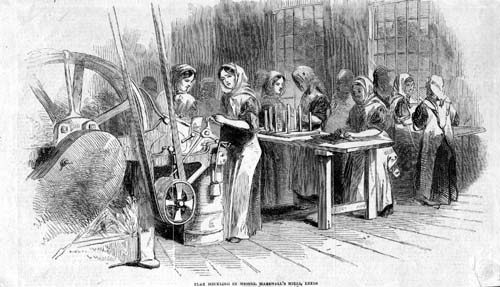
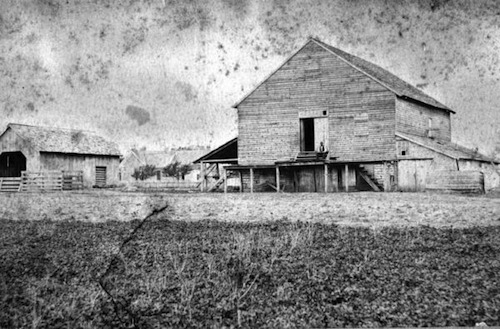
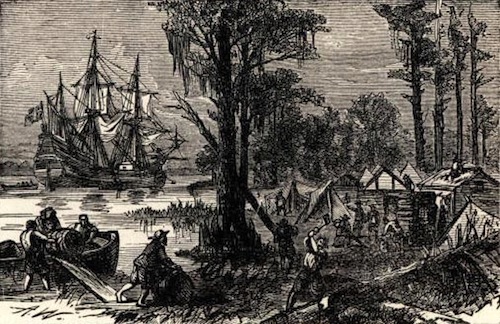
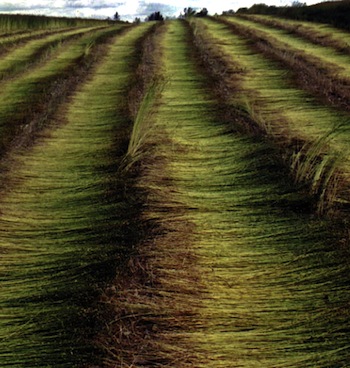
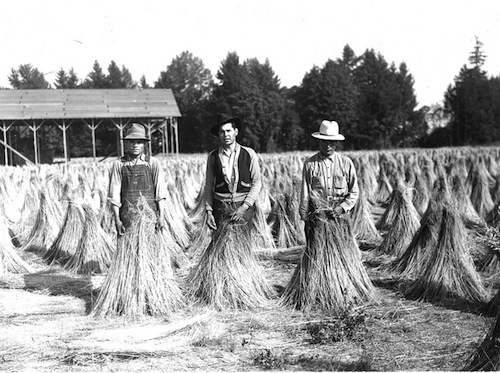
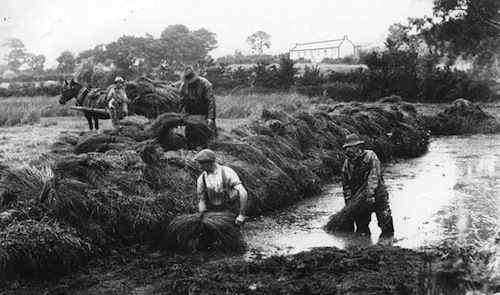
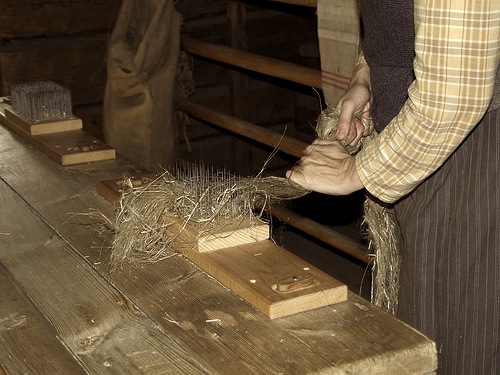
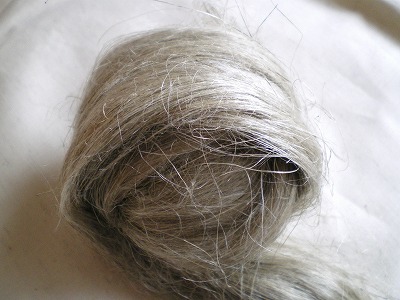
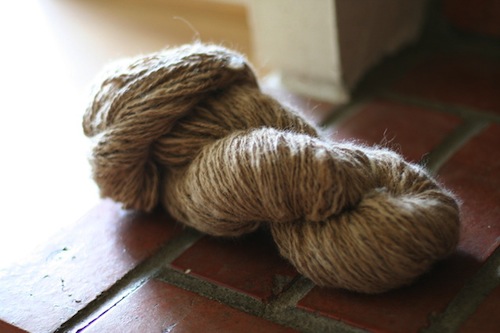
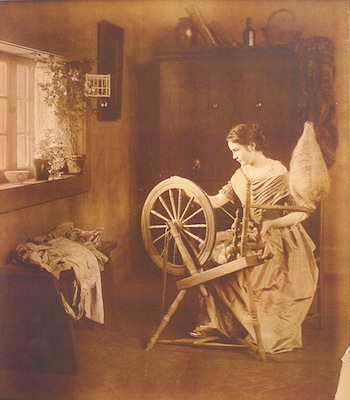

















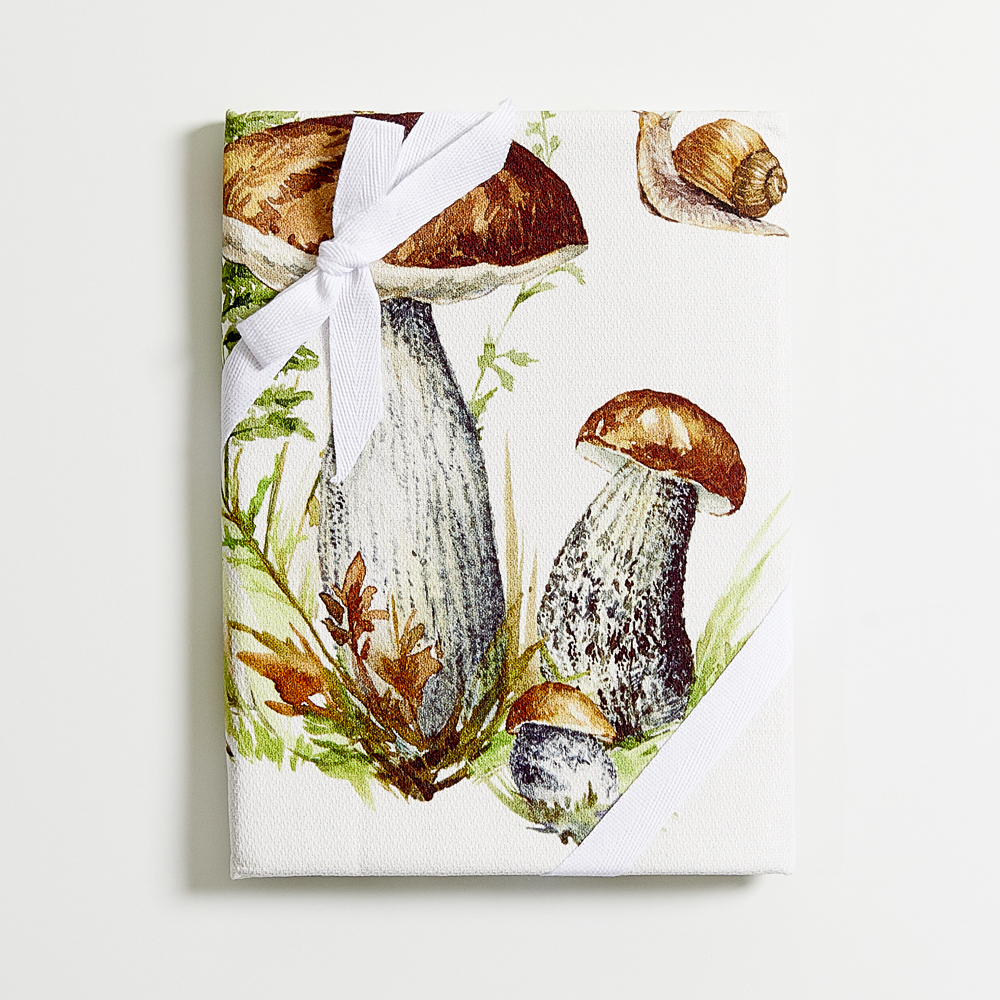










20 Comments
Nancy Rhodes Collins
I just want to know where Fabrics-store.com gets her fabric. Is the linen imported or is it milled in the US? If it is imported, imported from where. If it is milled in the US, I would like to know where.
Love your linens regardless but I need the answer.
Kitty
I like my linen very much, and really appreciate it but I was somewhat surprised to read that it was long wearing. I find it to be rather delicate once it’s softened. I have a beautiful linen blouse that I love very much but it’s worn thin in only nine months. Dish towels too develop worn spots in relatively short periods of time compared to cotton of equal weight. is there something wrong with modern linen that it’s not longer wearing? or am I not cleaning it right?
Maybe it’s the dryer. I quit drying my blouse in the dryer as soon as I realized that it was getting so thin and faded. maybe linen shouldn’t be dried in the dryer?
Thanks for any insight or help on this issue. Kitty
Helen Peemoeller
Of course, another very important reason is that cotton is, generally speaking, cheaper. It cost less after the cotton gin reduced the amount of labor involved in weaving a yard of cloth. After learning of all the time-consuming processes that linen weaving involved, we really should have a similar piece on that which is required for cotton weaving. But the price of a finished yard of cotton is still today less than that for a yard of linen. I am not urging anyone to make choices based solely on cost; however, the market does clearly reward low cost products.
AmyCat =^.^=
Becky:
Yes, Hemp was just about as important as Linen in Colonial times. Our Constitution is on Hemp paper, and if we used quick-growing Hemp for paper today we’d save acres of trees. It’s ridiculous that anti-marijuana laws destroyed the hemp industry in the U.S.
Hemp fabric is somewhat coarser than Linen, but if carefully processed can be made into fabric almost as comfortable as Linen and Cotton.
As for the old lies that “cotton is softer than Linen” or “Linen is scratchy”: Linen’s no worse than, say, new jeans that aren’t pre-washed. Once it’s been washed a couple times, it’s much softer and more comfortable than similar-weight cotton. I spent last weekend at a re-enactment event, wearing linen tunics, in weather ranging from 90* to windy, rainy, and mid-50s. (“If you don’t like the weather in Oregon… just wait a minute!”) My linen was comfortable, soft, and cool in the heat, yet warm as flannel at night when the temperatures dropped.
becky
Your article is very interesting. I am confused, though, because I thought hemp played a big part in our history. Hemp and linen are both bast fibers, and they are processed in much the same way.
Ruth
The answer to your question is yes hemp and flax are processed the same way
Susana K
What an interesting bit of history!
I’d like to share an amusing incident that happened to me a few years ago. I like to hang my laundry to dry in the sun, and was so doing one day when a gal who was living on the property came buy. One garment was a linen blouse that she admired. But when this gal (who isn’t the sharpest tool in the drawer to start with) realized it was linen, she was horrified! “Don’t you have to dry clean linen?”
I laughed and reminded her that linen has been used for clothing, all the way back to the ancient Egyptians who also used it to wrap mummies. Then I asked her where she thought the Egyptians took their dry cleaning.
Isn’t amazing—and sad—that we become so brainwashed by modern store tags and merchandising methods?
Virginia Galliart
Thanks so much for the historical info. Very interesting.
Wendell Cochran
Re: why linen isn’t as popular as cotton today? Primarily because it wrinkles regardless of how it is finished or blended with other fibers. Cotton, on the other hand, can be processed in ways that renders it permanent press. Sanforized is one of the first successful commercial, post WWII, processes for making cotton wrinkle free. Also, cotton is popular with manufacturers because the it can be grown and prepared for weaving with fewer mechanical processes needed to spin the fibers into yarn and dye it than it does for linen. Plus, cotton is smoother and feels better next to the skin. Linen, unless finely processed, has a tendency to feel scratchy when new.
Virginia Galliart
Thanks so much for the historical facts. I’m obviously a big fan of linen ever since my trip to Lithuania this summer. I was so impressed with the products I decided to start a company manufacturing bed linen and other products as well.
I, like the Early American Settlers, am trying to bring manufacturing back to this country and produce some jobs. I would like to see our dependence of China diminish over time and start producing textiles here again, before the people in the industry fade away into the past.
nicole novembrino
@Julie- I completely agree with you. My sarcastic tone about a gruesome war probably was not as obvious as I thought haha. I was joking by describing the war as “glorious.”
Marian Pierre-Louis
This a very interesting article. The thing I want to know is why linen isn’t as popular as cotton these days? Was it simple the cotton gin that eclipse linen? Seems like there is more to it than that.
Amy Hicks
Betty: You can make this dress any length you desired–even ankle length and do anything changes you like. The pattern is basic. LOVED THIS PATTERN! Amy
Amy Hicks
Betty: I think the length can be any length you desire–whether you wish it to be mid-thigh, knee, mid-calf, or ankle lenth. Just make sure you order enough for the length. I decided I didn’t like the pockets because I can really assessize with scarfs, jackets, jewelry, etc. to make this dress really for more business, evening, etc. instead of this plain casual. Amy
Jennifer Arnold Delgado
Nicole, This is another case of feeding the machine. They make a machine, and then we all spend our lives feeding it. In this case, the cotton gin. Sometimes I feel like that about dishwashers, as it means that three women in a kitchen doesnt have to happen, as it ends up me hanging out with a dishwasher, not that I am going to get rid of it, but my aunt used to store her canned goods in the one that came with her house ! I love love love your historical articles, thank you for keeping me informed, I especially love the old european history, but its all so interesting. Sincerely, Jennifer Arnold-Delgado
Julie
Liked the article but no war is glorious.
Norma Johnson
This article is so interestering since I’m from a cotton farmers family in California. I think I will make a U.S. flag from linen, what a good project that would be. Love your site. I have the linen for several of your projects, really anxious to try the wine carrier bags and the bread bags for Christmas.
Karen Alexander
Very interesting… I knew of the importance of linen in early America, but not of some of the more technical aspects of it’s harvest – I’m not so sure I’d call this much less labor intensive than cotton!!
Mary
Loved the article. I have had the opportunity to visit the Farmer’s Museum in Cooperstown, New York and watch them perform the very process you just described. Fascinating!
(Elizabeth) Betty Stroble
Really appreciate your sharing the history of cotton & linen. Yes, we today don’t really appreciate what our forefathers & mothers endured to make life better for us!!
Would like ideas on making sheets & other items of clothing. I’m still waiting for an answer to the length of the dress pattern you shared? It looks like a long jacket rather than a dress??? Thanks & God bless you & your sharing with all of us!!